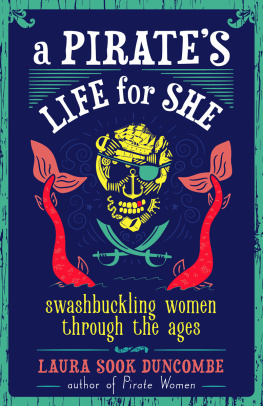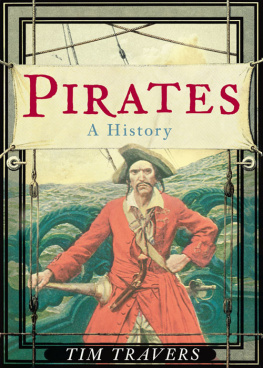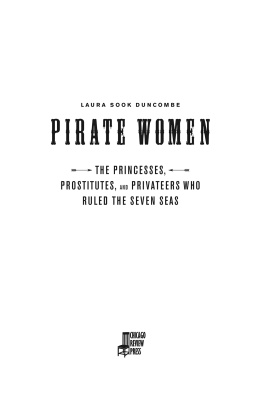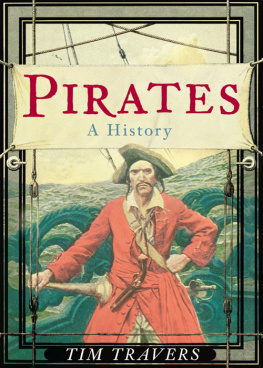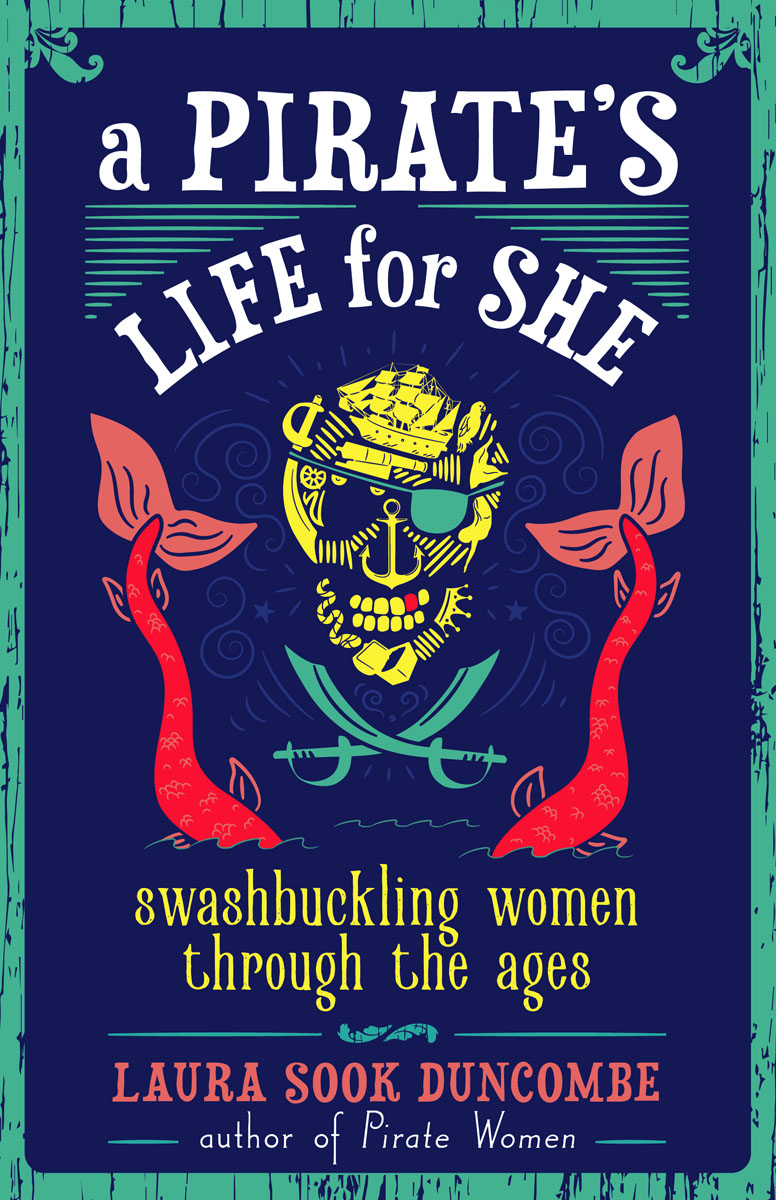

P irates are an enduring, popular subject, depicted often in songs, stories, and Halloween costumes. Yet the truth about pirate womenwho they were, why they went to sea, and what their lives were really likeis seldom a part of the conversation. A Seven Seas history of the worlds female buccaneers, A Pirates Life for She tells the stories of 16 women through the ages who sailed alongsideand sometimes in command oftheir male counterparts. These women came from all walks of life but had one thing in common: a desire for freedom.
History has largely ignored female swashbucklers, until now. Here are their stories, from ancient Norse princess Alfhild to Sayyida al-Hurra of the Barbary corsairs; from Grace OMalley, who terrorized shipping operations around the British Isles during the reign of Queen Elizabeth I to Cheng I Sao, who commanded a fleet of 1,400 ships off China in the early 19th century.
Author Laura Sook Duncombe takes an honest look at these women, acknowledging that they are not easy heroines: they are lawbreakers. A Pirates Life for She tells their full stories, focusing on the reasons they became pirates. It is possible to admire the courage, determination, and skills each pirate possessed without endorsing her actions. These are the remarkable stories of women who took control of their own destinies in a world where the odds were against them, empowering young women to reach for their own dreams.

LAURA SOOK DUNCOMBE is an author, lawyer, and feminist who enjoys Star Wars, Broadway, and Sherlock Holmes (when shes not out pirating). She lives in Tulsa, Oklahoma, with her husband and sons.
Jacket design and illustration: Lindsey Cleworth Schauer
PRINTED IN THE UNITED STATES OF AMERICA

To Meredith and Jillian Hanks
&
Landon and Carter Geurin
Some the most courageous, creative, and amazing kids I know. As promised, I wrote one you can read!
Copyright 2020 by Laura Sook Duncombe
All rights reserved
Published by Chicago Review Press Incorporated
814 North Franklin Street
Chicago, Illinois 60610
ISBN 978-1-64160-055-2
Library of Congress Cataloging-in-Publication Data Is available from the Library of Congress
Interior design: Jonathan Hahn
Table of contents illustrations: Natalya Balnova
Printed in the United States of America
5 4 3 2 1
Contents



Introduction

A pirate is no master of disguise. The eye patch, the peg leg, the parrot, the big feathered hatall of these things are very conspicuous. Even a person who has never met a pirate can identify one by sight. But is it just as easy to identify who a pirate is, instead of just how a pirate looks?
In reality, pirates are so much more (and so much harder to define) than their costumes. It is nearly impossible to find a common trait that applies to all pirates. Not time: they have sailed throughout every millennium. Not location: they hail from every inhabited continent. Not age, color, or creed either. Not even gender can be used to identify a pirate, for there have been male and female pirates since piracy began.
Female pirates have sailed alongside, or in some instances in command of, their male counterparts since ancient times. Yet for most of recorded history, their stories have been kept out of pirate books. Male historians have ignored female pirates, essentially saying the womens stories do not matter. Even today, women are sometimes told their experiences do not matter. But all womens stories do matter. They deserve to be told just as much the stories of men, which have dominated the conversation for so long.
Mens stories occupy a well-established place in our imaginations and on our bookshelves. These histories are not being erased; they are simply being asked to make room for others experiences. When men cannot or will not share their space, women must demand it, or take it. The pirates in this book have a lot to teach women today about taking things that other people say they cannot have. For there to be equality, the truth must be told. The truth is that women pirates have existed, do exist, and will continue to exist as long as there is a sea to sail upon.
Pirates are, first and foremost, criminals. It may seem strange to celebrate the lives of women who stole, tortured, and even killed for a living. However, pirates captivate readers despite their bad behavior. The women in this book gave up home and comfort for a chance to live outside societys rules and experience true freedom. That desire to be freefree from society, free from gender roles, and free from a life mapped out before it has begunis something many people identify with. It is possible to admire these womens courage, confidence, power, and intelligence without approving of their illegal actions. No person is entirely good or entirely bad, and there is plenty of good to appreciate in these bad women.
The stories in this book are divided into five parts. Each part explores a different reason women practiced piracy: revenge, escape, glory, adventure, and power. The women in each section share few similarities besides their motivation. In fact, the 16 women profiled in this book have little in common. They include old women, young women, poor women, rich women, mothers, daughters, religious women, atheist women, queens, and peasants. They pirated from 500 BCE to today. They come from Asia, Africa, Europe, North America, and the Caribbean. Some of them would not even recognize the form of pirating that others practice. Yet they are united. Each woman looked at the life that lay before her, saw what society told her a woman was allowed to have, and said, No, thanks! Each woman dreamed of controlling her own destiny. In becoming pirates, these women wrote their own stories instead of acting out the stories someone else wrote for them.
Readers should understand that it is difficult to separate fact from legend in pirate history. Pirates were, by their very nature, often not part of the official records of their day. Because they lived beyond the reach of the law, their stories were not recorded in conventional ways. However, these stories do not deserve to be cast into the trash can of history just because we cannot verify every fact. After all, how can a reader ever totally verify the truthfulness of a past event when two books written on the subject might say completely different things? History can change dramatically depending on who is doing the telling. As Keith Jenkins says in Re-thinking History, the past and history are two separate things. That being said, every effort has been made to include only the most accurate information in this book.
Next page
